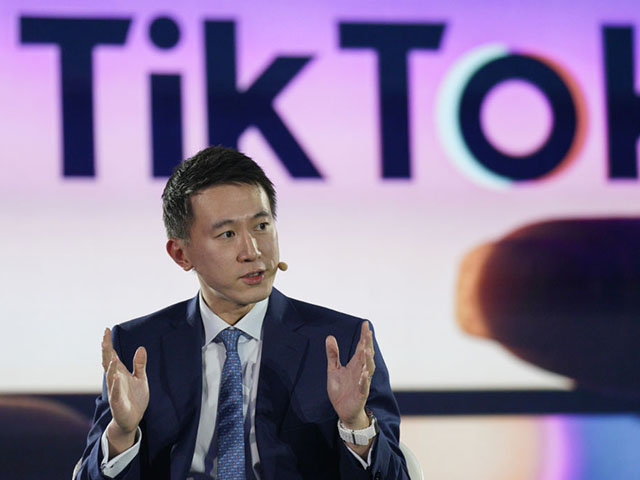There are many concerns about the China-owned app TikTok, such as its effects on mental health and it being a national security risk, but researchers are also interested in how it impacts kids’ brains after they binge-watch the app’s nonstop stream of addicting videos. They have nicknamed the result “TikTok Brain,” and it is impacting the lives of young Americans.
Early studies suggest that TikTok is actually changing youth’s attention spans, a phenomena known as “TikTok Brain.”

Shou Zi Chew, chief executive officer of TikTok Inc., speaks during the Bloomberg New Economy Forum in Singapore, on Wednesday, Nov. 16, 2022. The New Economy Forum is being organized by Bloomberg Media Group, a division of Bloomberg LP, the parent company of Bloomberg News. Photographer: Bryan van der Beek/Bloomberg via Getty Images
Young people who binge-watch short-form content like TikTok or Instagram Reels find it harder “to participate in activities that don’t offer instant gratification,” the Wall Street Journal reported.
The reward system in a person’s brain seeks reaction via continuous scrolling through TikTok and Instagram reels.
The TikTok platform, owned by a hostile foreign country, is a “dopamine machine,” John Hutton, director of the Reading & Literacy Discovery Center at Cincinnati Children’s Hospital, said.
“A flood of dopamine reinforces cravings for something enjoyable, whether it’s a tasty meal, a drug or a funny TikTok video,” the Wall Street Journal reported.
Neuropsychologist Sanam Hafeez told Bustle that “When you scroll and hit upon something that makes you laugh, your brain receives a hit of dopamine,” and “when you see something you don’t like, you can quickly pivot to something that produces more dopamine.”
Continuing this behavior could eventually train a person’s brain to crave the rewards they get from taking in short content. A recent study published by Guizhou University of Finance and Economics in China and Western Michigan University suggests that TikTok videos and similar YouTube Shorts engage users via “short bursts of thrills,” which can even develop addictive behavior.
Moreover, a 2019 study published in Nature Communication reportedly suggested that our “collective attention span” appears to be narrowing due to how quickly people consume content on social media.
On the contrary, when a young person engages in behavior that demands focusing for a prolonged period of time, such as reading a book, they use something known as “directed attention,” which involves the prefrontal cortex, “the part of the brain responsible for decision making and impulse control,” the Journal noted.
Young people experience “a cultural indoctrination” that encourages them to “grow used to and even prefer these kinds of highly stimulating fast scene shifts,” Gloria Mark, author of Attention Span: A Groundbreaking Way to Restore Balance, Happiness, and Productivity, told Wired.
Due to this, it is getting increasingly more difficult for young people to pay attention to things that don’t give them instant gratification.
“There are so many forces banding together that are just reinforcing people, especially young people, to have short attention spans,” Mark said.
You can follow Alana Mastrangelo on Facebook and Twitter at @ARmastrangelo, and on Instagram.

COMMENTS
Please let us know if you're having issues with commenting.